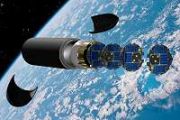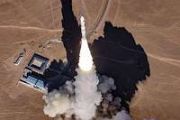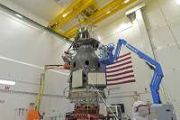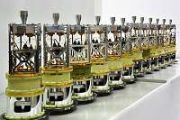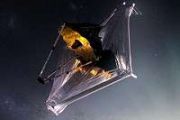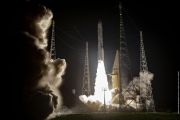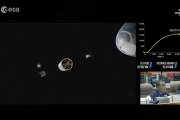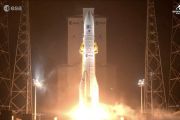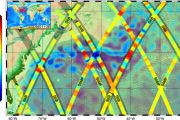
Copernical Team
Developing an open-source tool for a European space-grade computer chip

Space missions require high-performance, reliable and adaptable computing solutions that can operate in extreme conditions. An innovative project by YosysHQ and funded through ESA's Discovery element seeks to develop an open-source toolchain to work with a space-grade, radiation-hardened Field-Programmable Gate Array (FPGA) architecture.
Glacial Ice Loss Escalates Freshwater Depletion and Sea Level Rise
 A recent study underscores the accelerating loss of glacial ice worldwide, depleting regional freshwater reserves and significantly contributing to rising global sea levels. Conducted as part of the Glacier Mass Balance Intercomparison Exercise (GlaMBIE), the research, published in *Nature* on February 19, 2025, involves contributions from 35 international teams, including the German Aerospace C
A recent study underscores the accelerating loss of glacial ice worldwide, depleting regional freshwater reserves and significantly contributing to rising global sea levels. Conducted as part of the Glacier Mass Balance Intercomparison Exercise (GlaMBIE), the research, published in *Nature* on February 19, 2025, involves contributions from 35 international teams, including the German Aerospace C Long-Term Decline in Downward Surface Solar Radiation Highlights Emission Impacts
 A new study led by Dr. Fengfei Song and Dr. Lixin Wu from the Frontier Science Center for Deep Ocean Multispheres and Earth System and the Physical Oceanography Laboratory at Ocean University of China has examined long-term trends in downward surface solar radiation (DSSR).
As a crucial component of Earth's energy balance, DSSR influences global climate patterns and is essential for renewa
A new study led by Dr. Fengfei Song and Dr. Lixin Wu from the Frontier Science Center for Deep Ocean Multispheres and Earth System and the Physical Oceanography Laboratory at Ocean University of China has examined long-term trends in downward surface solar radiation (DSSR).
As a crucial component of Earth's energy balance, DSSR influences global climate patterns and is essential for renewa Solar Orbiter prepares for unprecedented Venus flyby
 ESA's Solar Orbiter, a collaborative mission with NASA, is poised for its closest-ever approach to Venus, marking a pivotal moment in its mission to study the Sun's polar regions.
The spacecraft's maneuver will alter its orbital trajectory, granting scientists a rare opportunity to observe the Sun's poles, a perspective unattainable from Earth. Insights gained from this unique vantage poin
ESA's Solar Orbiter, a collaborative mission with NASA, is poised for its closest-ever approach to Venus, marking a pivotal moment in its mission to study the Sun's polar regions.
The spacecraft's maneuver will alter its orbital trajectory, granting scientists a rare opportunity to observe the Sun's poles, a perspective unattainable from Earth. Insights gained from this unique vantage poin Mystery Surrounds Newly Discovered Cosmic Explosion Hidden for Years
 A powerful cosmic explosion from an unidentified object beyond our galaxy has intrigued astronomers after being unearthed in decades-old data from NASA's Chandra X-ray Observatory. This extraordinary discovery, published in *Monthly Notices of the Royal Astronomical Society*, remained unnoticed for years until a novel machine learning technique exposed its existence.
Researchers from Stanf
A powerful cosmic explosion from an unidentified object beyond our galaxy has intrigued astronomers after being unearthed in decades-old data from NASA's Chandra X-ray Observatory. This extraordinary discovery, published in *Monthly Notices of the Royal Astronomical Society*, remained unnoticed for years until a novel machine learning technique exposed its existence.
Researchers from Stanf Einstein Probe captures elusive X-ray pair
 The Einstein Probe satellite, utilizing its innovative lobster-eye X-ray optics, has detected a rare cosmic phenomenon-an intense X-ray burst from an unusual binary star system. This discovery highlights the mission's capacity to identify and track transient X-ray sources, shedding new light on the complex interactions and life cycles of massive stars.
The newly identified stellar system c
The Einstein Probe satellite, utilizing its innovative lobster-eye X-ray optics, has detected a rare cosmic phenomenon-an intense X-ray burst from an unusual binary star system. This discovery highlights the mission's capacity to identify and track transient X-ray sources, shedding new light on the complex interactions and life cycles of massive stars.
The newly identified stellar system c Flickering Light Show: Milky Way's Supermassive Black Hole Emits Continuous Flares
 The Milky Way's central supermassive black hole, Sagittarius A*, is proving to be a relentless source of cosmic activity, continuously producing bursts of light with no apparent pattern, according to new findings by astrophysicists using NASA's James Webb Space Telescope (JWST).
A team led by Northwestern University conducted the longest and most detailed observational study of Sagittarius
The Milky Way's central supermassive black hole, Sagittarius A*, is proving to be a relentless source of cosmic activity, continuously producing bursts of light with no apparent pattern, according to new findings by astrophysicists using NASA's James Webb Space Telescope (JWST).
A team led by Northwestern University conducted the longest and most detailed observational study of Sagittarius U-M astronomy will lead its first satellite mission with NASA grant
 The first space mission led by the University of Michigan Department of Astronomy is scheduled to launch in 2029 with the support of a NASA grant worth $10 million.
The mission is called STARI-STarlight Acquisition and Reflection toward Interferometry-and will showcase the viability of a new technique for studying exoplanets, or planets outside of our solar system.
The technique coul
The first space mission led by the University of Michigan Department of Astronomy is scheduled to launch in 2029 with the support of a NASA grant worth $10 million.
The mission is called STARI-STarlight Acquisition and Reflection toward Interferometry-and will showcase the viability of a new technique for studying exoplanets, or planets outside of our solar system.
The technique coul Trying to solve a key black hole mystery: Simulating magnetic flows around black holes
 Black holes are not just cosmic voids; they are dynamic engines capable of generating and redistributing immense amounts of energy. Encircled by swirling disks of gas and dust-known as accretion disks-these enigmatic entities can channel energy through powerful jets when strongly magnetized, a process primarily governed by the Blandford-Znajek (BZ) effect.
Despite its prominence in theoret
Black holes are not just cosmic voids; they are dynamic engines capable of generating and redistributing immense amounts of energy. Encircled by swirling disks of gas and dust-known as accretion disks-these enigmatic entities can channel energy through powerful jets when strongly magnetized, a process primarily governed by the Blandford-Znajek (BZ) effect.
Despite its prominence in theoret NASA Investigates Spaceborne Antibiotic Resistance with ISS Experiment
 NASA is advancing research on astronaut health with a new experiment aboard the International Space Station (ISS) aimed at accelerating the detection of antibiotic-resistant bacteria. This initiative is expected to enhance health safety measures for both astronauts in space and patients on Earth.
Antibiotic-resistant infections pose a major global health challenge, leading to increased mor
NASA is advancing research on astronaut health with a new experiment aboard the International Space Station (ISS) aimed at accelerating the detection of antibiotic-resistant bacteria. This initiative is expected to enhance health safety measures for both astronauts in space and patients on Earth.
Antibiotic-resistant infections pose a major global health challenge, leading to increased mor 



